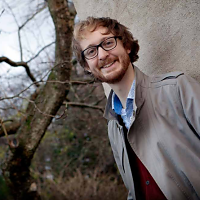Beyond the Internet of Things: the amazing tech that's coming next
Forget connected toasters, we want to control matter

You've got your web-connected toaster. You've got your 3D printer and Google Glass. What's next?
There's no need for a crystal ball - it's pretty easy to extrapolate the trends we've seen over the past century in technology. Moore's Law for processor speed, Butter's Law for network capacity, Kryder's Law for disk storage, and the Carlson Curve all boil down to one thing - miniaturisation.
We're getting really good at making things smaller in every area of technology, from computer components to mobile phones and even battery chargers, and it's not unreasonable to assume that these things are going to continue to get smaller. However, there are both soft and hard limits that we're going to hit on the way down.
The first main limit we hit is one of human usability. It doesn't make sense to make buttons any smaller than a human finger, so mobile phones stopped getting smaller around 2004 when the Motorola Razr wiped the floor with the competition.
Phone size remained the same for a few years until miniaturisation allowed Apple's iPhone to bypass hard buttons entirely with a touchscreen. Today, we're starting to see the first signs of the next step with miniaturisation allowing Google Glass to bypass touchscreens in favour of voice control.
Quantum limits
The next limit we hit is more serious. When things get small enough, the laws of physics start to change and we move into the quantum world. This throws a bit of a spanner in the works, because things stop operating the way we expect them to. But as well as headaches, the quantum world offers us opportunities - we can take advantage of radically new properties of matter.
As the Internet of Things dives down this path, we'll see individual devices getting both smaller and more numerous. The result will be what Texas Instruments' Gene Frantz and Dave Freeman described in a white paper in 2012 as "an intelligent mist of technology that surrounds us to make our lives automatically safer and more comfortable".
Sign up for breaking news, reviews, opinion, top tech deals, and more.
"Eventually there will be trillions of these devices, the equivalent of thousands for every man, woman and child on earth," they wrote. "The intelligent swarm will be ubiquitous, helping to keep our bodies healthy, our buildings comfortable, our cities efficient, and above all minimise waste of precious natural resources."
We can equip these trillions of networked nodes with different components to create new types of matter that we can manipulate with instructions from computers.
Imagine a cloud of fog that suddenly solidifies at the flick of a switch, or a clay-like substance that changes its shape at will, or the ability to gather data from every square millimetre of an alien planet. For decades, nanotechnologists have fantasised about these possibilities, but now we're actually starting to make them happen.
Claytronics
Perhaps the easiest to envision is a concept called "claytronics" that originated with Seth Copen Goldstein and Todd Mowry, both professors at Carnegie Mellon University. A lump of their 'clay' is comprised of a huge number of "catoms" that are individually programmed, each measuring less than a millimetre across. That means a litre of the substance would contain millions of units which can be shaped at will into whatever you like.
Jason Campbell is a senior researcher at Intel Labs who worked on the computing giant's claytronics programme until it ended in 2010.
"I think of Claytronics as a way to make shape a property we can control in software," he explains. "That capability would let us record and play back shapes much as today's audio and video recording do the same for sound and appearance."
That could enable us to send handshakes, 3D designs, or even kisses over the web.
